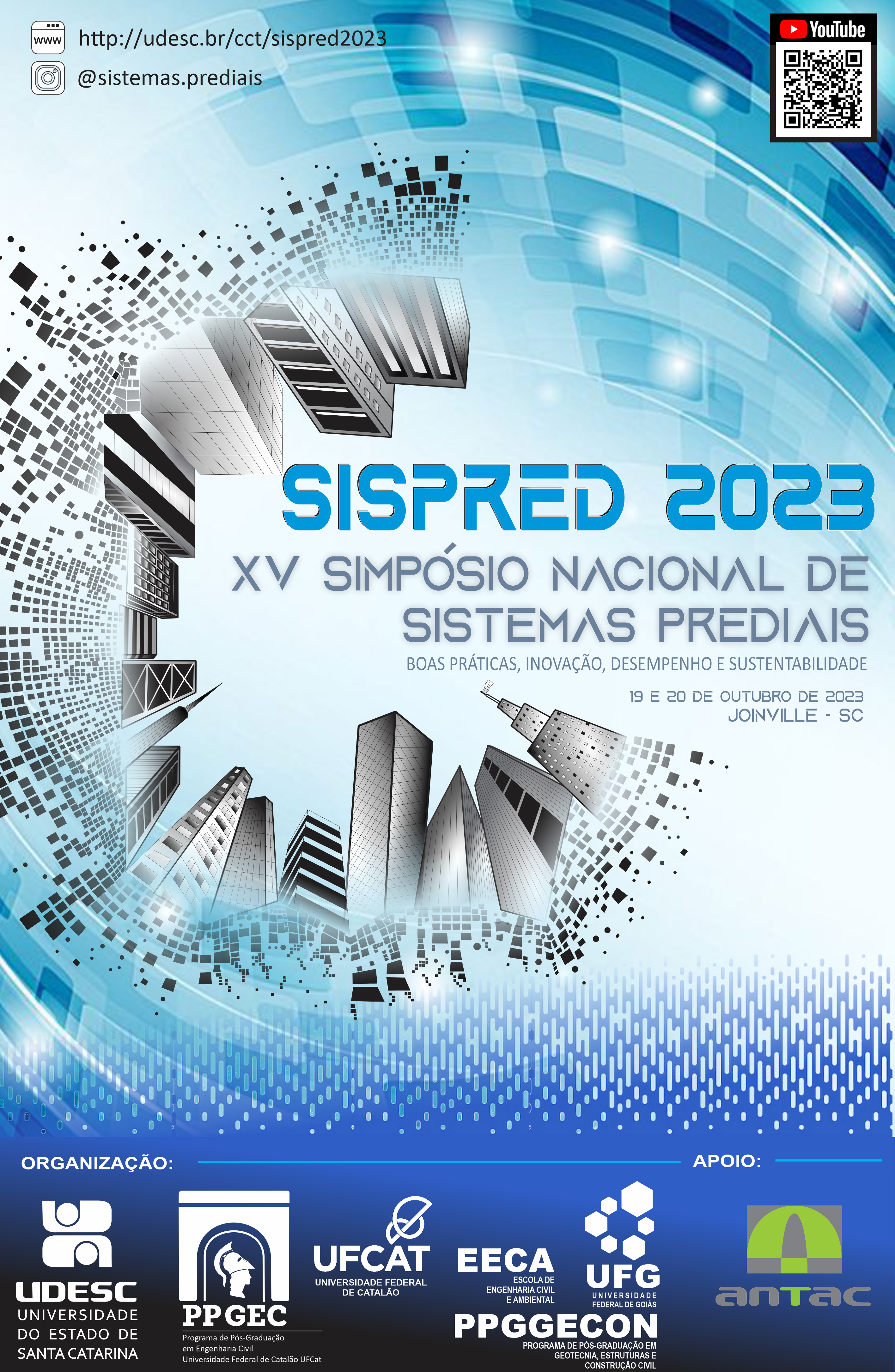Comparison of different design parameters applied to hydraulic sizing of sewage drainage building components
DOI:
https://doi.org/10.46421/sispred.v3.2961Keywords:
Plumbing Systems, Sewage Drainage, Hydraulic Sizing, Design ProjectAbstract
ABSTRACT: The NBR 8160 (ABNT, 1999) addresses the design of sewage building systems (SBS) and prescribes two methods for SBS sizing: the sum of Hunter contribution units and the hydraulic method. A significant difference between them is that the hydraulic method requires design parameters related to the building's usage, while the Hunter method considers only the existing sanitary appliances. Given the number of parameters involved in the hydraulic method, the objective of this study was to analyze the influence of the failure factor and the number of floors when using this method to size the SBS of a building. Two options for the failure factor were used: 1% and 5%, and the evaluated floors were 4, 8, 12, 16, and 20. It was observed that the discharge and sewage branches did not undergo variations with changes in the failure factor or the number of floors because they are pipelines that receive contributions from individual units. On the other hand, as the number of floors increased and the failure factor decreased, the calculated diameters of drop pipes and subcollectors increased due to the increased flow rate, resulting in an increase in certain nominal diameters.
Downloads
References
ASSOCIAÇÃO BRASILEIRA DE NORMA TÉCNICAS. ABNT NBR 8160: Sistemas prediais de esgoto sanitário - Projeto e execução. Rio de Janeiro: ABNT, 1999.
BARONI, B. T. Redução dos diâmetros de ramais e coletores nos sistemas prediais de esgotos sanitários. Dissertação. Universidade de São Paulo, Escola Politécnica, 2018.
CARVALHO JÚNIOR, R. de. Instalações Hidráulicas e o projeto de arquitetura. 12ª ed. São Paulo: Edgard Blucher, 2019.
DEMARCO, P.; KOELLER, J.; MARTIN, S.; SWATKOWSKI, L; WHITE, C.; BURGESS, M.The drainline transport of solid waste in buildings. In: INTERNATIONAL SYMPOSIUM CIB W062 ON WATER SUPPLY AND DRAINAGE FOR BUILDINGS, 39th, 2013, Nagano, Japão. Water Supply and Drainage for Buildings. Nagano: The International Council for Research and Innovation, Commission CIB W062, 2013. Pp. 93-104.
MACINTYRE, A. J. Instalações hidráulicas: prediais e industriais. 4 ed. Rio de Janeiro: LTC, 2017.
VALÊNCIO, I. P. Desempenho do sistema predial de água e esgoto sanitário com uso de bacias sanitárias de volume de descarga de 4,8 litros. Dissertação. Universidade de São Paulo, Escola Politécnica, 2017.
VERÓL, Aline Pires; VAZQUEZ, Eliane Garrido; MIGUEZ, Marcelo Gomes. Sistemas Prediais Hidráulicos e Sanitários - Projetos Práticos e Sustentáveis. 2 Ed. Rio de Janeiro. Elsevier. 2020.
WISE, A. F. E.; SWAFFIELD, J. A. Water, Sanitary and Waste Services for Buildings. 5° Ed. Butterworth Heinemann – Elsevies Science. Woburn, MA. ISBN: 0 7506 5255 1. 2002. 269p.

